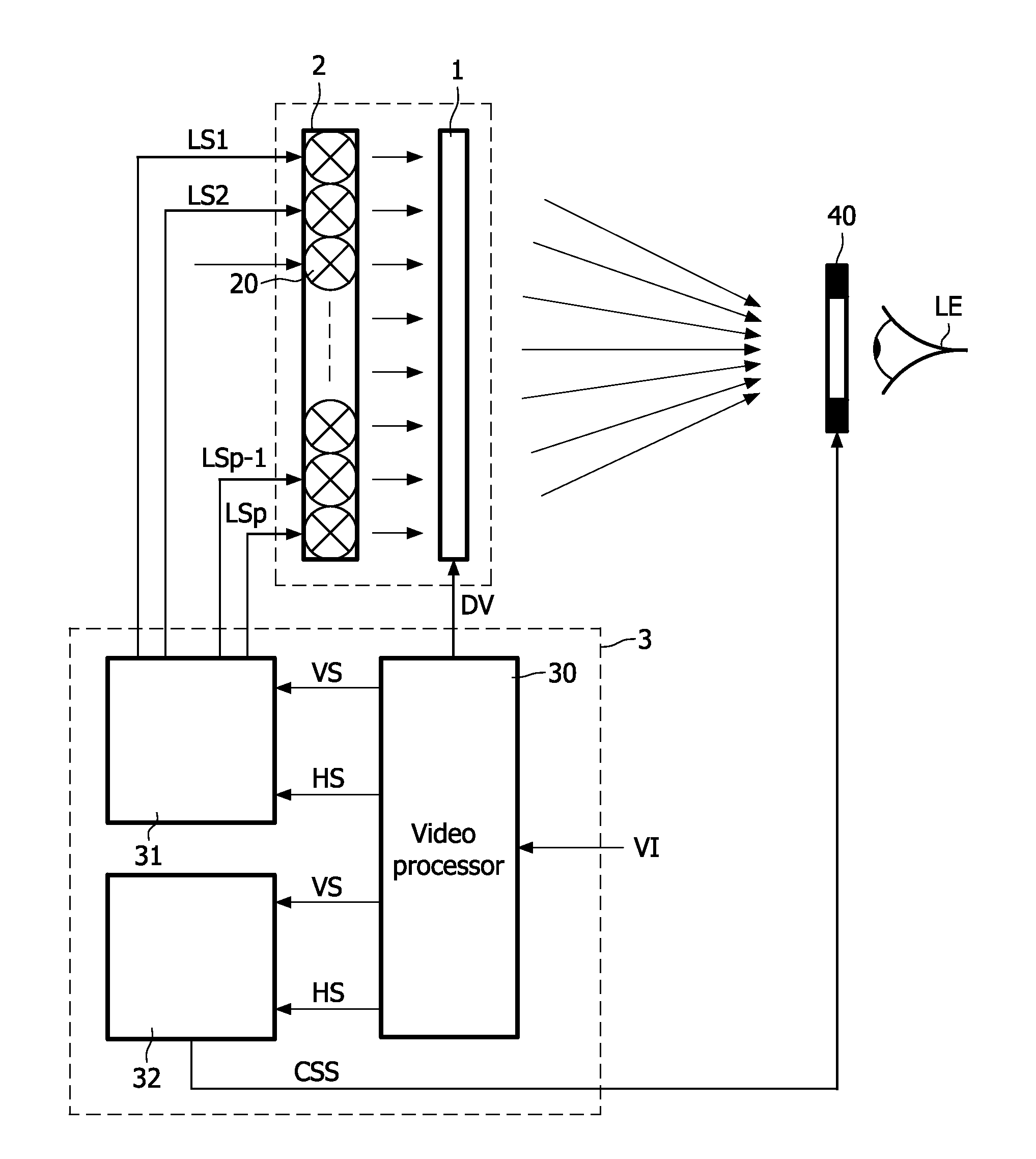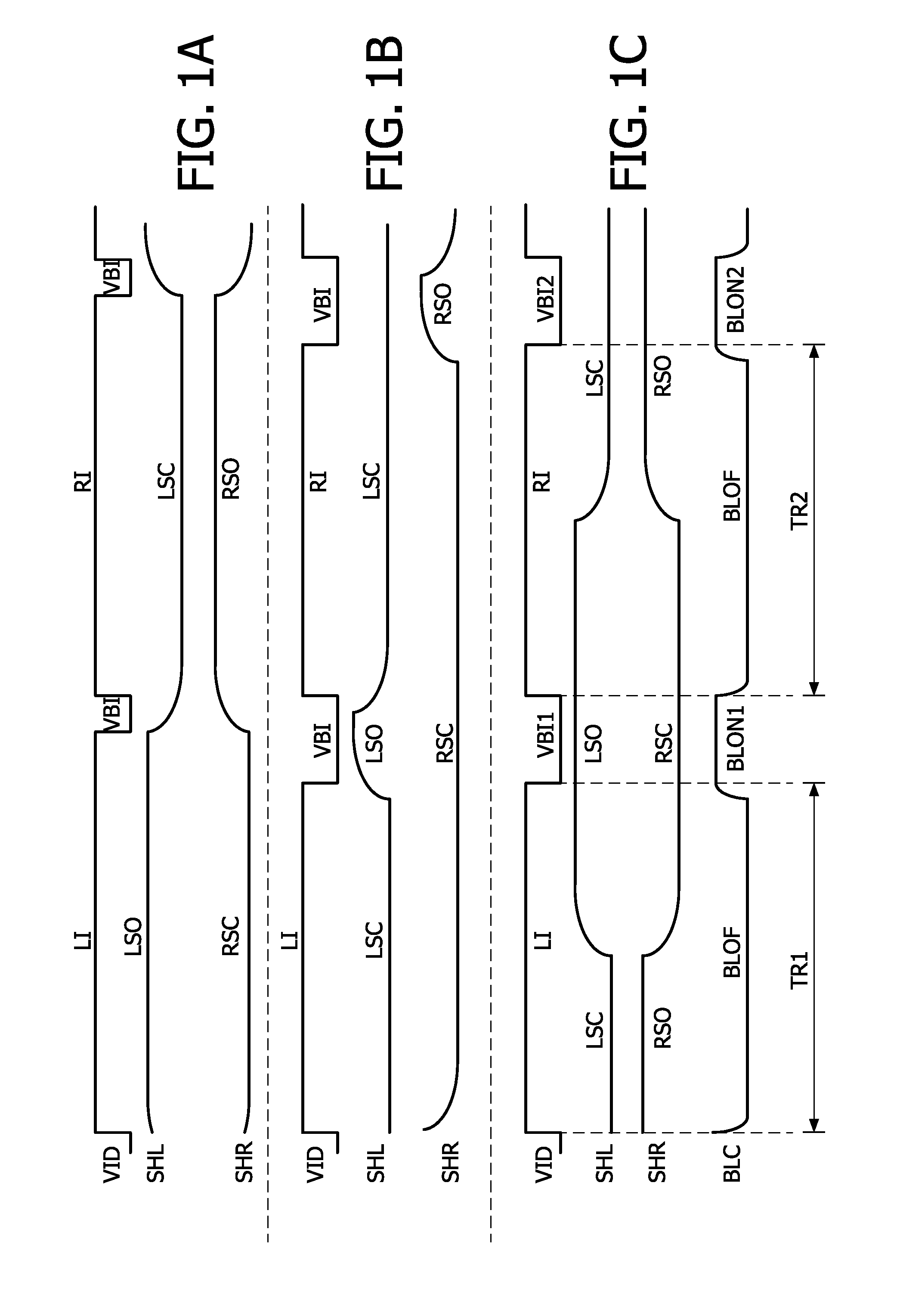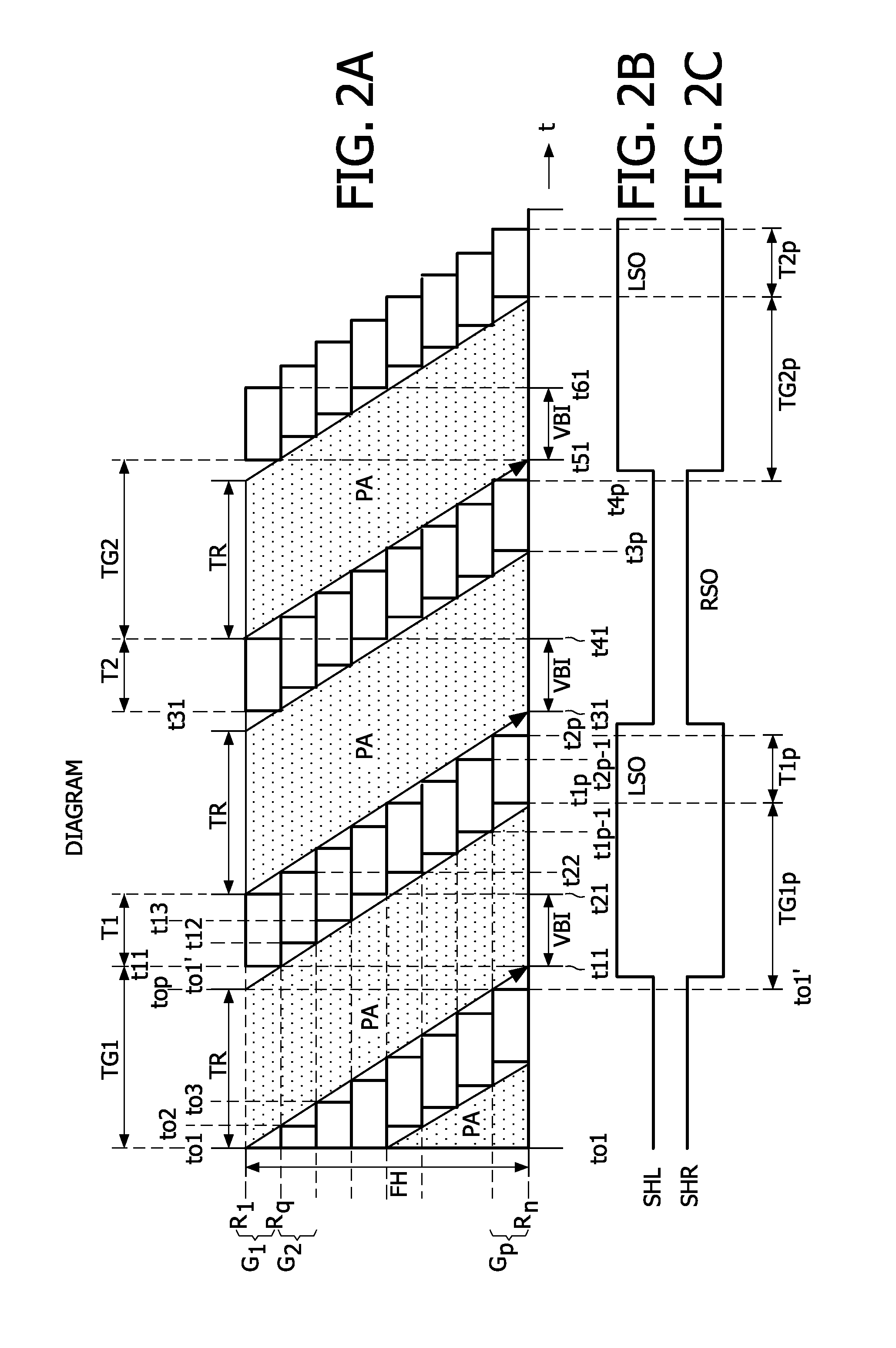Stereocopic visualisation
- Summary
- Abstract
- Description
- Claims
- Application Information
AI Technical Summary
Benefits of technology
Problems solved by technology
Method used
Image
Examples
Embodiment Construction
[0038]FIGS. 1A to 1C schematically respectively show shutter timings for a CRT, a LCD without pulsed backlight and a LCD with pulsed backlight.
[0039]FIG. 1A shows the known timing of the shutter glasses for a CRT. The top graph stylistically shows the period in time the left image LI is written on the CRT and the period in time the right image RI is displayed on the CRT. The vertical blanking interval in between the left image LI and the right image RI is indicated by VBI. The middle graph shows the optical state of the left shutter SHL. The left shutter SHL is in the transmissive state LSO (the left shutter is open or on) when the left image LI is displayed and in the blocking state LSC (the left shutter is closed or off) when the right image RI is displayed. The bottom graph shows the optical state of the right shutter SHR. The right shutter SHR is in the closed state RSC during display of the left image LI and is in the open state RSO during display of the right image RI.
[0040]Th...
PUM
 Login to View More
Login to View More Abstract
Description
Claims
Application Information
 Login to View More
Login to View More - R&D
- Intellectual Property
- Life Sciences
- Materials
- Tech Scout
- Unparalleled Data Quality
- Higher Quality Content
- 60% Fewer Hallucinations
Browse by: Latest US Patents, China's latest patents, Technical Efficacy Thesaurus, Application Domain, Technology Topic, Popular Technical Reports.
© 2025 PatSnap. All rights reserved.Legal|Privacy policy|Modern Slavery Act Transparency Statement|Sitemap|About US| Contact US: help@patsnap.com



